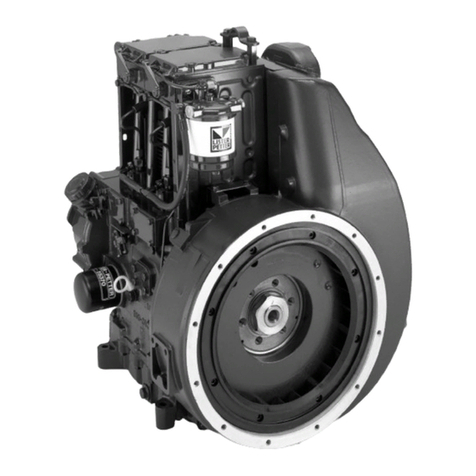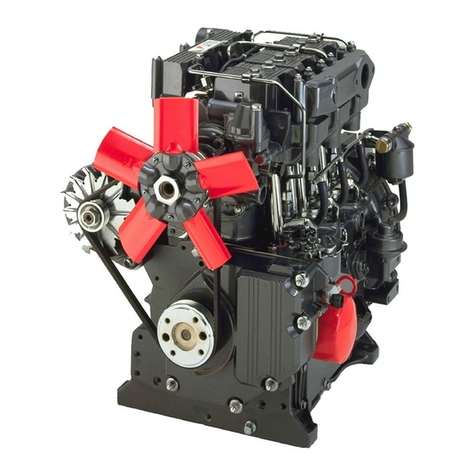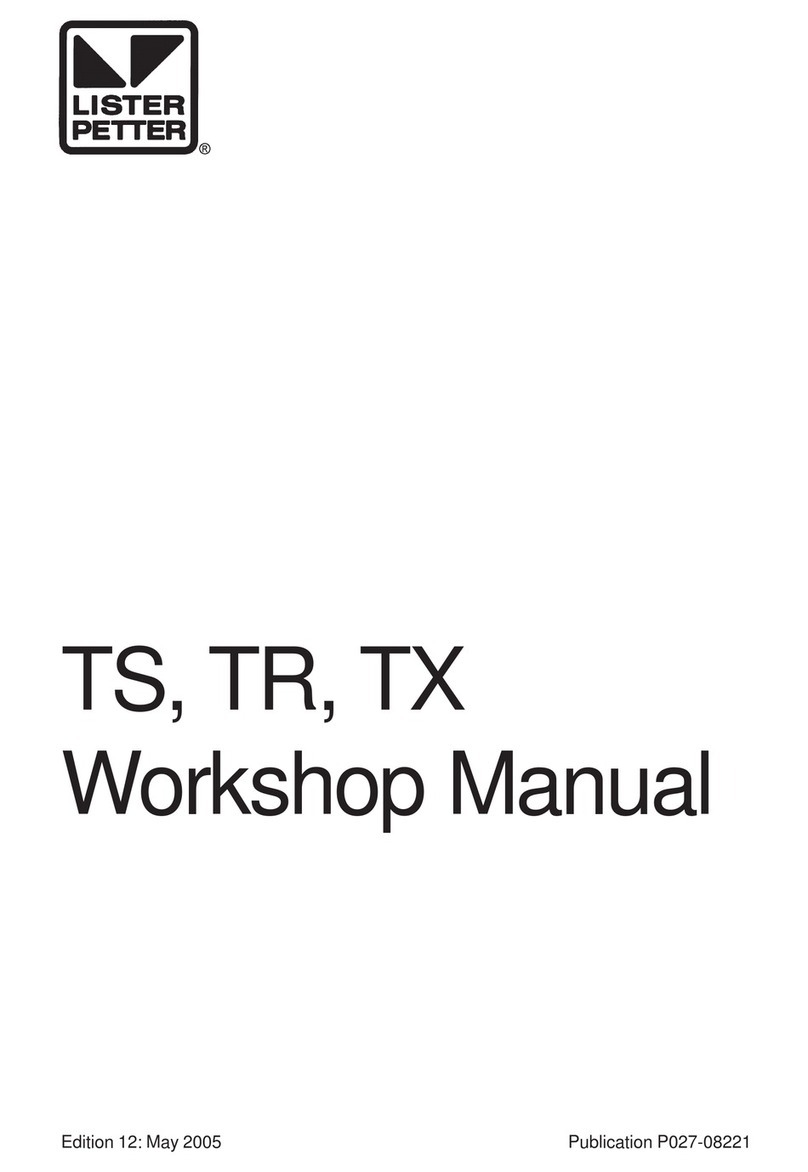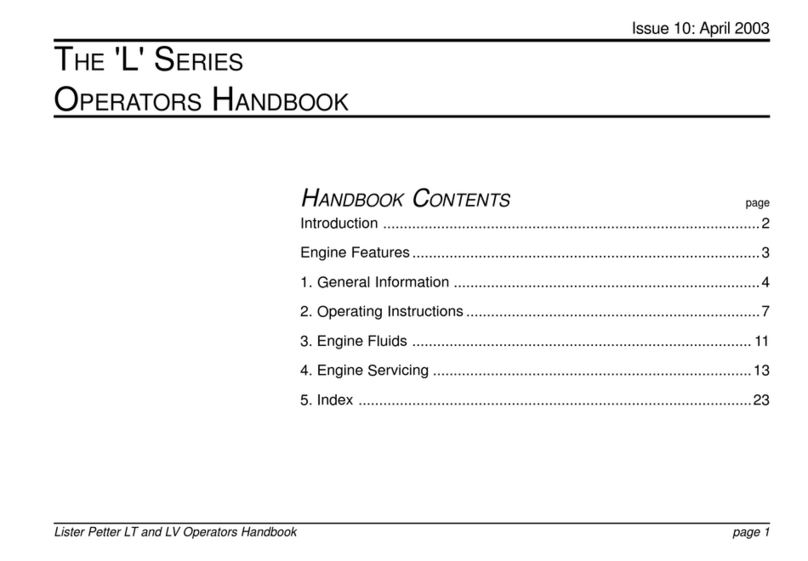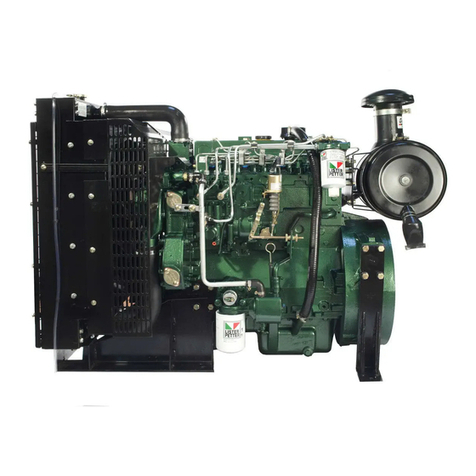• Ensuretheliftingequipmenttobeused
has the correct capacity to lift the engine
and is designed to give a vertical lift from
directly above the lifting eyes.
• Checktoensuretheengineliftingeyes
are not damaged and they are secure.
• Ensurethereisclearancebetweenthe
lifting equipment hooks and the engine.
• Theliftingeyesttedtotheengineare
suitable for lifting the engine and acces-
sory assemblies originally tted by Lister
Petter.
Waste Disposal Precautions
WARNING
Extreme care must be taken to ensure
that waste oil, fuel, lter elements, cool-
ant concentrate, battery electrolyte, sol-
vents or other toxic wastes are disposed
of in accordance with local regulations to
prevent contamination.
Fuel System Precautions
a. When priming or checking the fuel injec-
tion pump timing, care must be taken to
wipe spilled fuel from the outside of the
engine.
b.Alwaystanewjointwhenaunionhas
been disturbed.
c. Special care must be taken to see that
there is no leakage from the joints of the
fuel pipe connection to the pump.
d. When tightening or loosening the fuel
injection pump delivery connections, use
two spanners to prevent the unsealing of
the fuel pump delivery valve holders.
e. When refitting the fuel pipe from the
pump to injector, the connection to the
injector must be tightened before the
connection to the fuel pump.
This procedure will ensure that there is
no leakage from these joints.
f. It is most important that all fuel joints are
tight and leak proof.
g.Always ll the fuel tank through a ne
strainer, preferably at the end of the
engine work period.
Starter Battery Precautions
WARNING
Sulphuric acid in battery electrolyte is
poisonous, is strong enough to burn skin,
eat holes in clothing and cause blindness
if splashed into the eyes.
a. Do not smoke near the batteries and
keep sparks and flames away from
them.
b. Batteries contain sulphuric acid - if the
acid has been splashed on the skin,
eyes orclothesush it awaywithcopi-
ous amounts of fresh water and seek
immediate medical aid.
c. Keep the top of the battery well venti-
lated during charging. Switch off the
battery charger before connecting or
disconnecting the charger leads.
d. Disconnect the battery negative (earth)
leadrstandreconnectlast.
e.Never 'ash' connections to check cur-
rentow.
f. A damaged or unserviceable battery
must never be used.
g.Donotattempttochargeafrozenbat-
tery; it may explode; warm the battery to
16°C (60°F).
Oil Seals Containing Viton
Someenginesmaybettedwithseals
or 'O' rings manufactured from 'Viton' or a
similar material.
When exposed to abnormally high tem-
peratures, in excess of 400°C (752°F), an
extremely corrosive acid is produced which
cannot be removed from the skin.
If signs of decomposition are evident, or
if in doubt, always wear disposable heavy
duty gloves.
Lifting Precautions
The following points must be consid-
ered before attempting to lift the engine.
WARNING
Engine lifting eyes must not be used to lift
the complete plant.
3. Safety Information and Precautions
